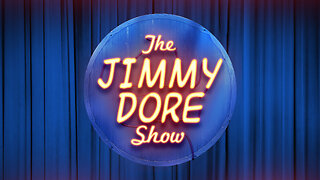Retro Review:Should You Buy a Pound Technologies Challenger Super NES & Super Famicom Clone System
In this video, we test and review the Pound Technologies Challenger clone 16-bit Super Nintendo Entertainment System & Super Famicom video game system.
If there's one thing that I have focused on it has been clone hardware. I love the idea of being able to play my classic games in HD via an HDMI cable. Some systems just kill it, others, well, not so much. A new challenger has recently stepped into the 16-bit SNES and Super Famicom ring from a fairly young company. Pound Technologies has just recently entered the retro arena with items such as HDMI cables for the OG Xbox and the Sega Dreamcast. Showing they are focused on retro they have also launched a 16-bit clone console they call the Challenger.
If you want to see how the Pound Technologies Challenger is equipped out of the box make sure you watch my unboxing video, available here: https://youtu.be/p4UVCaf2btM
Before we get too far in the review I do have to acknowledge something I missed in the unboxing, but our amazing viewer, Henry Padilla, caught. The L and R buttons are actually installed backward in the controller. No, I'm not making this up. Yes, both controllers were like this. Yes, the buttons can be flip-flopped. No, this isn't really forgivable, especially when a Quality Control sticker is covering one of the screws holding the controller together.
From the get-go, the controller felt like it was ok but the button presses, specifically the L & R triggers, detracted from gameplay. They missed button presses in Super Castlevania IV and the travel for the triggers wasn't what I would have preferred. An easy solution is to use either original Super Nintendo or Super Famicom controllers or any of the great 3rd party controllers out there. The form factor didn't bother me, just the button responsiveness.
Audio and video quality seemed good if a little soft on the pallet. Darker colors specifically felt like they were a little lacking on the black levels. I did also get some video artifacts when playing the Joe & Mac Ultimate Caveman Collection, but that's the only game that it showed up.
Once I put in my PAL version of Yoshi's Island something unexpected happened. My German version was displaying English! I was floored, I absolutely, 100% did not expect this. Upon further testing, only one other system that displayed the copy in English was my Gamerz Tek Super HD-2. None of my other systems, or PAL games for that matter, did this. I love this fact as the only way I have to play PAL SNES games is via Clone hardware at this time. Starwing, however, another German PAL game I own, did not translate the game from German to English.
Why it RoX
- Translates my German PAL version of Yoshi's Island to English
- Compact design
- Works with Super Gameboy
- 16:9/4:3 Switch
- NTSC/PAL Switch
- Plays NTSC-J games
- Micro USB Power input
What could be improved
- Poor QC with the L & R Triggers being installed backward
- Controllers aren't great
- Controller ports are very tight
- Notable lag in some games
- Not all PAL Games translated from German to English
- Overpriced for what it delivers
- Some lag and slowdown in Super Gameboy mode
Should you buy one?
If you like playing PAL games this is a good option for you in the USA. Above and beyond that I think there are better options out there for the money. If this were $10-$15 less expensive I think the value would be much better. As it is it's a bit on the high side for pricing and, with controllers that are usable at best, leaves a bit to be desired.
The footage used in this review are used under the Fair Use laws, referenced below:
https://www.law.cornell.edu/uscode/text/17/107
Notwithstanding the provisions of sections 106 and 106A, the fair use of a copyrighted work, including such use by reproduction in copies or phonorecords or by any other means specified by that section, for purposes such as criticism, comment, news reporting, teaching (including multiple copies for classroom use), scholarship, or research, is not an infringement of copyright. In determining whether the use made of a work in any particular case is a fair use the factors to be considered shall include—
(1) the purpose and character of the use, including whether such use is of a commercial nature or is for nonprofit educational purposes;
(2) the nature of the copyrighted work;
(3) the amount and substantiality of the portion used in relation to the copyrighted work as a whole; and
(4) the effect of the use upon the potential market for or value of the copyrighted work.
The fact that a work is unpublished shall not itself bar a finding of fair use if such finding is made upon consideration of all the above factors.
(Pub. L. 94–553, title I, § 101, Oct. 19, 1976, 90 Stat. 2546; Pub. L. 101–650, title VI, § 607, Dec. 1, 1990, 104 Stat. 5132; Pub. L. 102–492, Oct. 24, 1992, 106 Stat. 3145.)
-
 20:26
20:26
RoXolidProductions
2 months ago $0.04 earnedI Am Devastated and Need This Amazing Community's Help
1936 -
 2:49:04
2:49:04
Fresh and Fit
6 hours agoAfter Hours w/ Girls
103K178 -
 6:54
6:54
Breaking Points
15 hours agoCraven Diddy APOLOGIZES After Hotel Assault Video
14.6K20 -
 2:36:44
2:36:44
Spittin' Chiclets
8 hours agoVancouver-Edmonton Game 7 Live Stream
31.3K3 -
 3:41:38
3:41:38
The Jimmy Dore Show
2 days agoThe Jimmy Dore Live Panel Show
242K315 -
 1:24:43
1:24:43
Fresh and Fit
12 hours agoSteve Mayeda On How Child Custody Battles Can Ruin Men's Lives
69K25 -
 7:11:04
7:11:04
Akademiks
10 hours agoDiddy Apologizes for Brutally Beating Cassie in Viral Video. Did the Feds, Cassie or Hotel Leak this
87.3K47 -
 1:16:44
1:16:44
The Anthony Rogers Show
19 hours agoEpisode 313 - Smile Empty Soul
30K -
 9:41
9:41
China Uncensored
12 hours agoWhy Is Everything In China Falling Apart?
30.8K24 -
 54:16
54:16
LFA TV
22 hours agoDemocrat Attacks Have Turned Trump Into a Superhero | Trumpet Daily 5.20.24 9pm EST
46.2K15